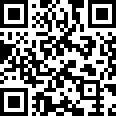



![]() May 15, 2019
May 15, 2019
The gum disease is the most important branch disease such as peach, apricot, plum, cherry, and so on. Generally, it is divided into two kinds: physiological fluid and invasive fluid.
First, the symptoms
1. Physiological flow plastic. Mainly occurs on the trunk and the main branch. After the rain, the gum comes into contact with the air and turns into a brownish-brown, amber-like plastic block. The diseased part becomes brown and rot when infected with saprophytic bacteria. As a result, the tree vigor becomes weaker and weaker, resulting in serious dead trees. The onset in the rainy season is heavy, and the older trees are seriously ill. Young trees are light onset.
2. Invasive fluids are mainly harmful to branches. The pathogens infect the current year's shoots and invade the wounds and lateral buds. There are nodules around the lenticels. They do not shed fluids and have latent infection characteristics. The following year, the tumors are cracked and the glue overflows. A large number of fusiform or circular black spots were generated on the surface. There were 2 peak incidences in 1 year, 1 in early May to 1 in early June, and from late August to early September. This is a phenomenon with physiological fluids. The biggest difference.
Second, the incidence of the law
Physiological fluidic gum disease is mainly caused by frost damage, frost damage, pests and diseases, smolt damage, excessive or insufficient moisture, improper fertilization, excessive trimming, excessive results, soil viscosity, or excessive soil acidity. Older peaches suffer more. The invasive Myxomycete is contaminated with mycelium and conidia in the diseased branches, and conidial spores occur from late March to mid-April the following year. The spores spread with the wind and are mainly invaded by wounds but also from the lenticels. Invasion of lateral buds causes initial infection and can be reinfested. In particular, a large number of pathogenic bacteria were spilled from the diseased areas on rainy days, and they were scattered under the shoots or spattered on new shoots. They invaded through lenticels and wounds and became the main source of susceptibility to new shoots. The activity of latent pathogens in branches is related to temperature. When the temperature is around 15°C, the diseased part can seep out glue. As the temperature rises, the fluidity of the trees increases, the condition worsens, and the soil becomes more viscous and acidic. Large, poorly-drained plots are prone to disease.
Third, comprehensive control measures
According to the above symptoms and the law of incidence, prevention and control of the disease in the actual production should be mainly based on agricultural control and artificial prevention, supplemented by chemical control, and chemical control mainly controls the spore scattering and the invasion of spores at two peak periods. The specific measures are as follows:
1. Strengthen cultivation and management, increase tree vigor, and increase disease resistance of peach trees. Apply more organic fertilizer to the diseased tree, apply appropriate phosphorus and potassium fertilizers, and control nitrogen fertilizer in the middle and later stages. Reasonable pruning, reasonable load, coordination of the contradiction between growth and results, and maintaining a stable tree trend. Drain the rainy season to reduce the humidity in Taoyuan. Timely summer cuts to improve ventilation and light transmission conditions, while preventing and controlling other pests, especially peach tree branches, reducing wounds and mechanical wounds.
2. Eradicate the source of overwintering bacteria. In the coldest period from December to January, the clear garden was disinfected, and the flowable rubber lump and the rotted cortex and wood underneath were scraped and burned in a concentrated manner. Then the traditional Chinese medicine fungicide Jinguo 400 times liquid + silicone was used to eliminate the source of overwintering bacteria. , eggs, at the same time can also prevent freezing damage, sunburn.
3. Before germination of the peach trees, spray the Chinese medicine fungicide Jinguo 600 times liquid + silicone to spray the pathogens.
4. smear prevention. When smearing, use a knife to scrape off the gum and old cracked skin of the diseased part, and use the knife tip to draw a few lanes along the trunk (the depth is up to the xylem), and then use the syrup of Corrupted Turtle+silicone to clean the affected part after cleaning ( The smear area should be larger than the incidence area. The fruit trees with serious damage (a lot of plastic flow and a large amount of fluid) should be applied once every 5 to 7 days, which can promote the healing of the damaged tissue.
The above is the hot melt bookbinding glue we have listed for you. You can submit the following form to obtain more industry information we provide for you.
You can visit our website or contact us, and we will provide the latest consultation and solutions
Send Inquiry
Most Popular
Send Inquiry